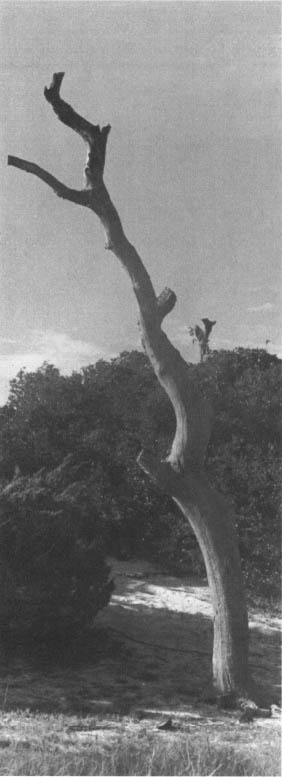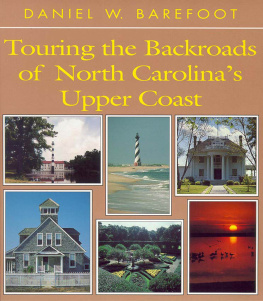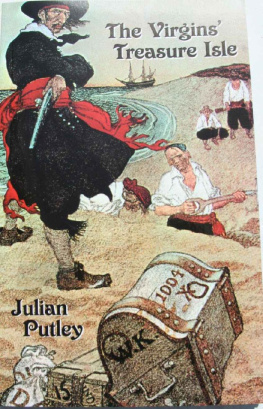Ocracoke
IN THE FIFTIES

ALSO BY DARE WRIGHT
Lonely Doll Books
The Lonely Doll (1957)
Holiday for Edith & the Bears (1958)
The Doll and the Kitten (1960)
The Lonely Doll Learnsa Lesson (1961)
Edith & Mr. Bear (1964)
A Gift from the Lonely Doll (1966)
Edith and Big Bad Bill (1968)
Edith and Little Bear Lend a Hand (1972)
Edith and Midnight(1978)
Edith and the Duckling (1981)
Other Books
The Little One (1959)
Date with London (1961)
Lona (1963)
Take Me Home (1965)
Look at a Gull (1967)
Look at a Colt (1969)
The Kittens Little Boy (1971)
Look at a Calf (1974)
Look at a Kitten (1975)
Unpublished Manuscirpt
Make Me Real


Copyright 2006 by Brook Ashley
All rights reserved under
International and Pan-American Copyright Conventions
Printed in Canada.
The paper in this book meets the guidelines
for permanence and durability of the Committee on
Production Guidelines for Book Longevity
of the Council on Library Resources.
The photographs in this book were taken by Dare Wright during several visits to Ocracoke in the 1950s. After writing the accompanying text, she printed and hand-bound this homage to the island into a single cardboard-mounted volume. That original book was restored in 2005. Brook Ashley, as the sole heir to the estate of Dare Wright, is the owner of any and all rights pertaining to all photographs, photographic collections, books, artworks, letters, and other intellectual properties that were created by or otherwise belonged to Dare Wright. Neither this book nor any of its contents may be copied, reproduced, or reprinted in any manner, form, or fashion without the express written consent of Brook Ashley.
Library of Congress Cataloging-in-Publication Data
Wright, Dare.
Ocracoke in the fifties / photographs and narrative by Dare Wright; edited by Brook Ashley and
John Ogilvie.
p. cm.
ISBN-13: 978-0-89587-322-4 (alk. paper)
ISBN-10: 0-89587-322-2
1. Ocracoke Island (N.C.)Pictorial works. 2. Ocracoke Island (N.C.)Description and travel. 3. Ocracoke Island (N.C.)Social life and customs20th century. I. Ashley, Brook, 1947
II. Ogilvie, John. III. Title
F262.H9W75 2006
551.461348dc22 2006000291
DESIGN BY DEBRA LONG HAMPTON


C ontents
Dare Wright (1914-2001) was a model, fashion photographer, and childrens author who lived in New York City. Her best-selling childrens stories began with The Lonely Doll in 1957. This classic book told the story of a lonely doll named Edith and the two bears who came to keep her company. Illustrated with Dares haunting black-and-white photographs, the book was an immediate success. It was followed in 1958 by Holiday for Edith & the Bears, which Dare photographed on Ocracoke Island. Dare wrote eighteen more childrens books (one of them unpublished), but she also intended to complete a tribute to Ocracoke Island for the adult market. She left me the hand-bound draft of this unpublished book, along with several boxes of her Ocracoke photographs, when she died. My husband, John Ogilvie, and I have restored the photographs and edited Dares text to create this volume. Dares notes suggest several possible titles, but Ocracoke in the Fifties seems the most appropriate.
I grew up in Manhattan considering Dare as my second mother. Having no children of her own, she often borrowed me from my parents. Overnights with Dare meant eating flan for dinner and concocting fanciful tales of pirates and buried treasure. There was something almost otherworldly about Dare, and she retained a childs inquisitiveness throughout her life.
There has been an astounding resurgence of interest in Dare and her work. Three of her childrens books are back in print, with more to follow. Articles about her have appeared in the New York Times and other newspapers around the country. She has been the subject of a biography, several magazine articles, and innumerable Internet blogs. Dares Web site (www.darewright.com) has received over five thousand visitors in a single month. There will soon be a feature film based on her life.
My father, a native North Carolinian, introduced Dare to Ocracoke Island in the early 1950s. She was immediately captivated by its wild beauty and miles of unpopulated beaches. When Dare began photographing the island and its people, it was already clear to her that she was documenting a vanishing way of life. She revisited Ocracoke many times and waited over a decade after taking these pictures before she wrote the text. More than thirty years have passed since then, and the island has absorbed outside influences unimagined by Dare or the subjects in her photographs.
I remember Dares Ocracoke from my childhood, when the unshod wild ponies came right up onto my grandmothers porch. My husband first visited the island as a young man, and we both retain memories of an island way of life that no longer exists.
Nostalgic without being sentimental, this book is Dares homage to an island and a culture poised between the tides of historical tradition and inevitable change.
Brook Ashley
Executor of the estate of Dare Wright
The following North Carolinians are owed thanks for their help with this project: Alton Ballance, Philip Howard, and Anne Russell.




O cracoke is the name of an island. It is a name that lingers in the mind, and an island that lingers in the heart. It is a place of sea and sky, of drifting sand and crying gulls, a slim sand bar in the Atlantic where centuries of isolation have created a special quality of life. It is part of the barrier reefs of North Carolina known as the Outer Banks, and its history is woven into the beginning of America.
It was on Ocracoke in 1585 that Sir Walter Raleighs expedition first stepped ashore. The same expedition established the earliest European colony in America on nearby Roanoke Island.
Yet earlier than that, French and Spanish exploring parties had landed on the Outer Banks. Those adventurers thought they were standing on an isthmus looking west at another ocean, beyond which lay China and the wonders of the Orient. What they were really seeing was the shallow, thirty-mile-wide Pamlico Sound, beyond which lay the coast of North Carolina and the unexplored American continent.
As settlements grew numerous on the shores of the mainland, the Outer Banks were a welcome protection from Atlantic storms and invasion.But they were also a nuisance because their waters were too shallow for the trade brought by deep-draft oceangoing ships.The only entrances to the sound were the narrow and constantly changing inlets between the islands.
Next page



















